What are Nucleotides?
Nucleotides are tiny molecules, like Lego blocks, building the essential instructions for life in our cells. Picture them as the alphabet of a genetic language. Each nucleotide is made up of three parts: A sugar (Deoxyribose in DNA, Ribose in RNA), a phosphate group, and a nitrogenous base. The nitrogenous base is crucial, acting like letters in our genetic alphabets. There are four main types of nitrogenous bases namely: Adenine (A), Thymine (T) in DNA, Guanine (G), and Cytosine (C).
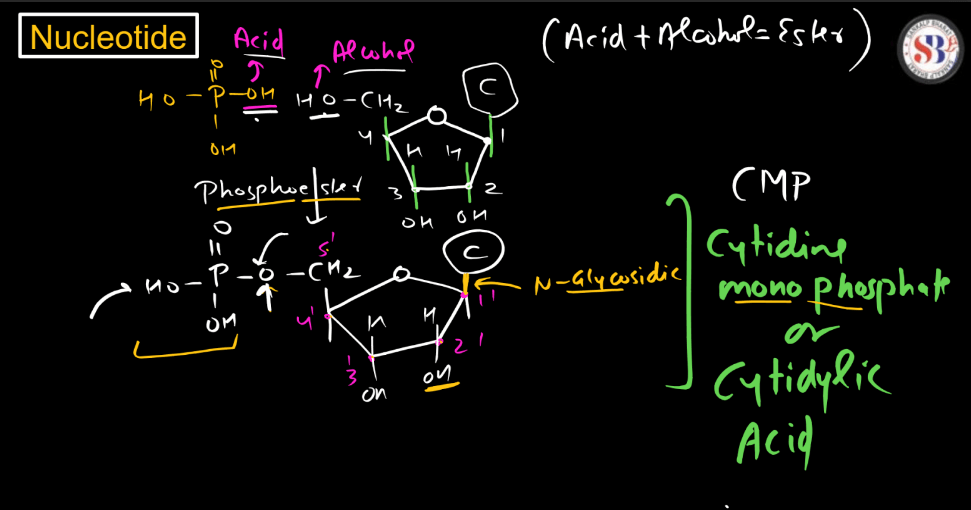
In RNA, thymine is replaced by uracil (U). The order of these bases forms the genetic code, like words in a book. DNA’s structure is like a staircase, where each step is a pair of these bases. Adenine always pairs with thymine (or uracil in RNA), and guanine with cytosine. This pairing ensures accurate copying of genetic information that guides the development and functioning of all living organisms. So, nucleotides are the alphabet of life, spelling out the unique story of each organism in its DNA.
Structure of Nucleotides
Nucleotides are the building blocks of DNA and RNA, essential for genetic information storage and transfer. Each nucleotide structure includes three main components: a phosphate group, a sugar molecule, and a nitrogenous base. The phosphate group serves as the backbone, linking the nucleotides together in a chain. The sugar molecules, either deoxyribose in DNA or ribose in RNA, attaches to the phosphate group, forming the structural framework.
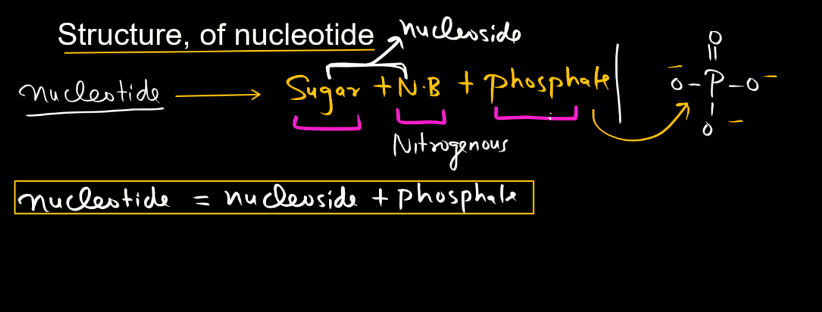
The nitrogenous bases are crucial for genetic coding. These nitrogenous form the famous double helix structure in DNA. The sequence of these base pairs encodes genetic information. Together, the phosphate-sugar backbone and the nitrogenous bases create a stable and intricate structure, allowing the precise transmission and replication of genetic instructions in living organisms.
Components of Nucleotides
A nucleotide consists of three main components: a phosphate group, a sugar molecule (deoxyribose in DNA or ribose in RNA), and a nitrogenous base (adenine, thymine/uracil, guanine, cytosine).
| Different Components of Nucleotides | |
| Components | Description |
| Phosphate Group | A phosphate group in nucleotides is a chemical component that provides energy for cellular activities and connects nucleotide building blocks in DNA and RNA molecules. |
| Sugar Molecules | Nucleotides contain deoxyribose or ribose sugars. These sugars, combined with phosphate and nitrogenous bases, form the building blocks of DNA and RNA, essential for genetic information. |
| Nitrogenous Base | Nucleotides have nitrogenous bases, such as adenine, thymine, cytosine, and guanine in DNA, and adenine, uracil, cytosine, and guanine in RNA, crucial for genetic coding. |
Phosphate Group
Phosphate groups in nucleotides are crucial components of DNA and RNA, acting like molecular bookmarks. Imagine each nucleotide as a tiny book, and the phosphate group as a bookmark that helps organize and hold the books together. This phosphate “bookmark” provides structural support, liking individual nucleotides to form the DNA or RNA chain. The phosphate group also carries a negative charge, influencing the overall charge of the molecule. In essence, these phosphate bookmarks play a vital role in the structure, stability, and function of genetic material, allowing cells to store and retrieve information essential for life processes.
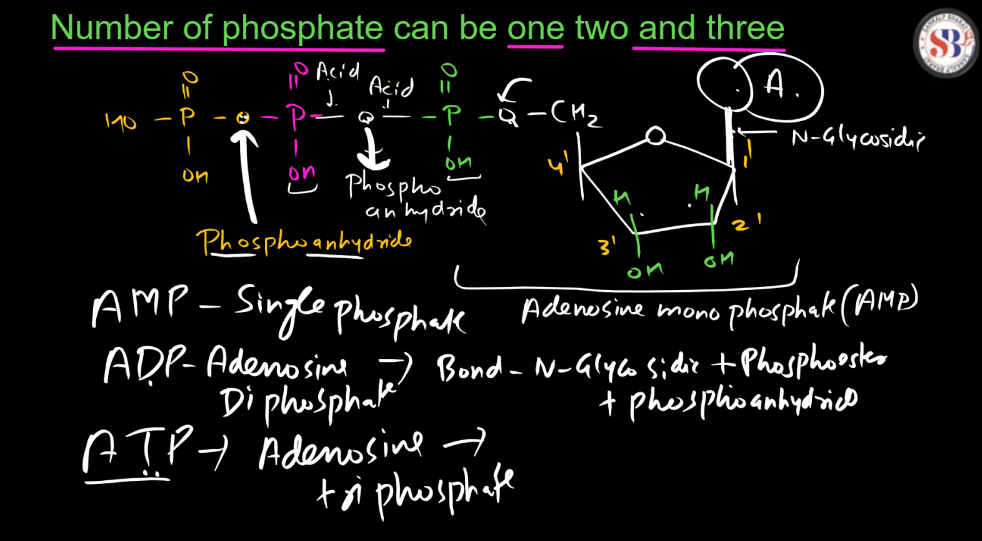
Nitrogenous Base
Nitrogenous bases are crucial components of nucleotides, the building blocks of DNA and RNA. These bases include adenine (A), thymine (T), cytosine (C), guanine (G) in DNA, and adenine (A), uracil (U) cytosine (C), guanine (G) in RNA. They form pairs -A with T in DNA, and A with U in RNA, while C pairs with G. These base pairs create the genetic code, guiding the synthesis of proteins and other cellular processes. The sequence of these nitrogenous bases encodes genetic information, determining an organism’s traits. Understanding these bases is fundamental to unraveling the intricate language of genetics and molecular Biology.
| Different Types of Nitrogenous Base | |
| Types | Description |
| Purines | Purines are essential molecules found in DNA and RNA, serving as building blocks for genetic material. They include adenine and guanine, crucial for cellular functions. |
| Pyrimidines | Pyrimidines, like cytosine, thymine, and uracil, are fundamental components of DNA and RNA. They contribute to the genetic code, playing a role in cellular processes. |
Sugar Molecules
Sugar molecules in nucleotides play a crucial role in DNA and RNA, the genetic instructions of living organisms. In DNA, the sugar is deoxyribose, while in RNA, it’s ribose. These sugars form the backbone of the nucleotide structure. Think of the sugar as the support structure, like the rails of a ladder. The nucleotide ladder also includes phosphate molecules as steps and nitrogenous bases (adenine, thymine/uracil, guanine, cytosine) as the rungs. The sequence of these bases carries genetic information. So, the sugar molecules help build the framework for the genetic code, guiding the development and functioning of living organisms. When a Nitrogenous base gets attached to the sugar molecules they together form “Nucleosides”.
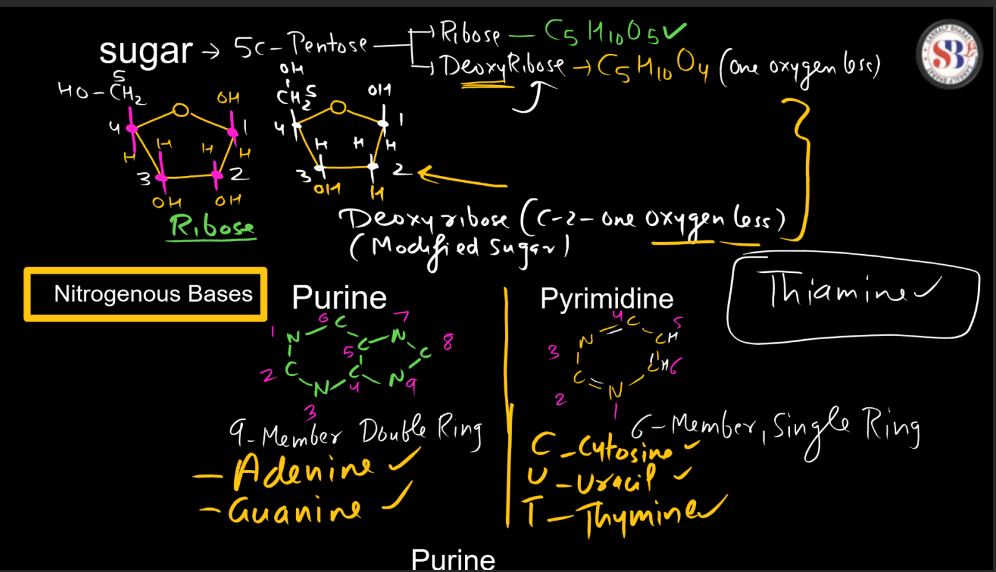
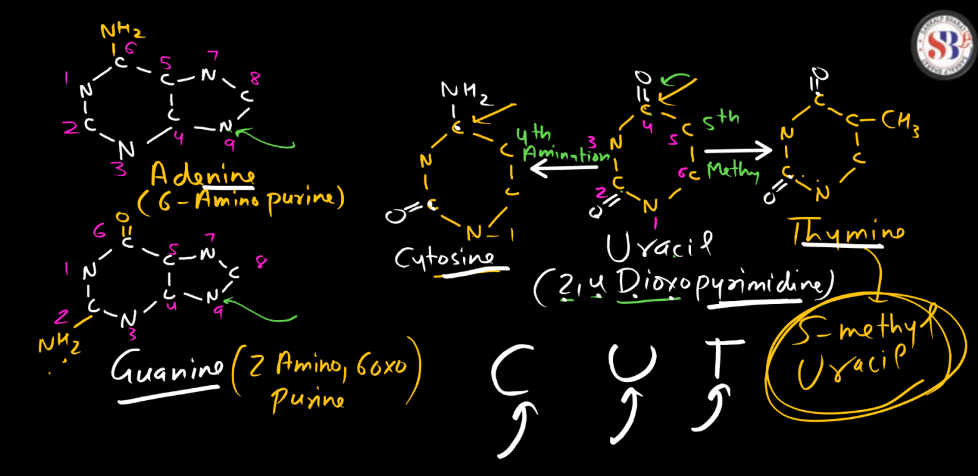
Nucleosides
Nucleosides are essential building blocks of DNA and RNA, the genetic material in our cells. Think of them as molecular Lego pieces that construct the genetic code. Each nucleoside consists of two main parts: a sugar molecule (either ribose or deoxyribose) and a nitrogenous base. The sugar serves as the backbone, providing structural support, while the nitrogenous base determines the nucleoside’s identity. There are four types of nitrogenous bases: Adenine (A), Thymine (T)/Uracil (U), Guanine (G), and Cytosine (C).
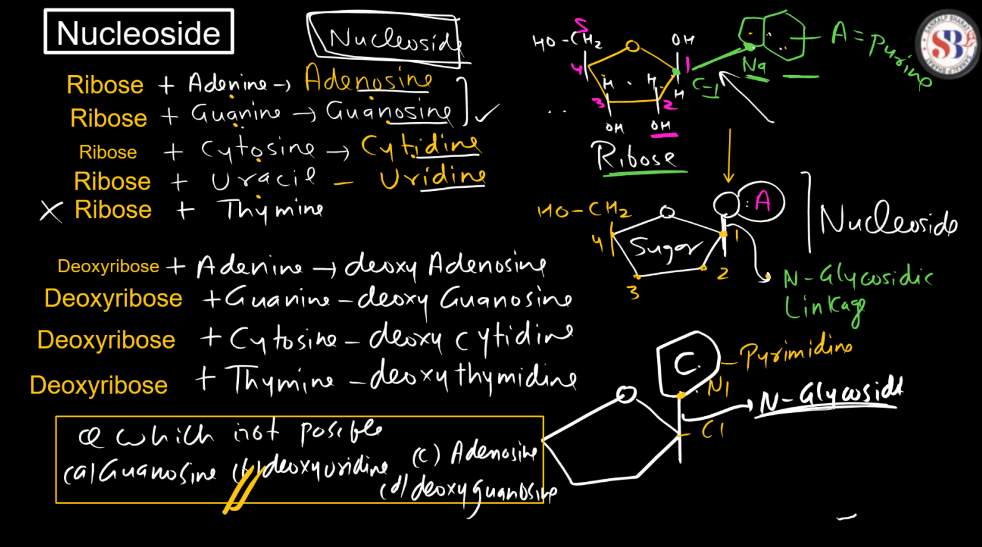
The specific combination of these bases forms the genetic instructions for cellular functions. Nucleosides join together to form nucleotides, which are the building blocks of DNA and RNA. DNA’s double helix structure arises from nucleotides pairing up through complementary base pairing – A with T (or U in RNA), and C with G. Understanding nucleosides is crucial for comprehending the intricate molecular language that encodes the information guiding life processes with our cells.
Functions of Nucleotide
Nucleotides serve as the building blocks of DNA and RNA. In simple terms, they have three main functions. Nucleotides are fundamental to storing genetic information, providing energy for cellular activities, and participating in cell communication.
- Genetic Code: Nucleotides carry the instructions (genetic code) that determine an organism’s traits. This information is crucial for the growth, development, and functioning of living organisms.
- Energy Transfer: Nucleotides like ATP (Adenosine triphosphate) play a key role in transferring and storing energy within cells. This energy is used for various cellular activities, such as muscle contraction and chemical reactions.
- Cellular Signaling: Nucleotides are involved in cell signaling processes. Molecules like cAMP (cyclic adenosine monophosphate) transmit signals within cells, influencing various cellular responses.

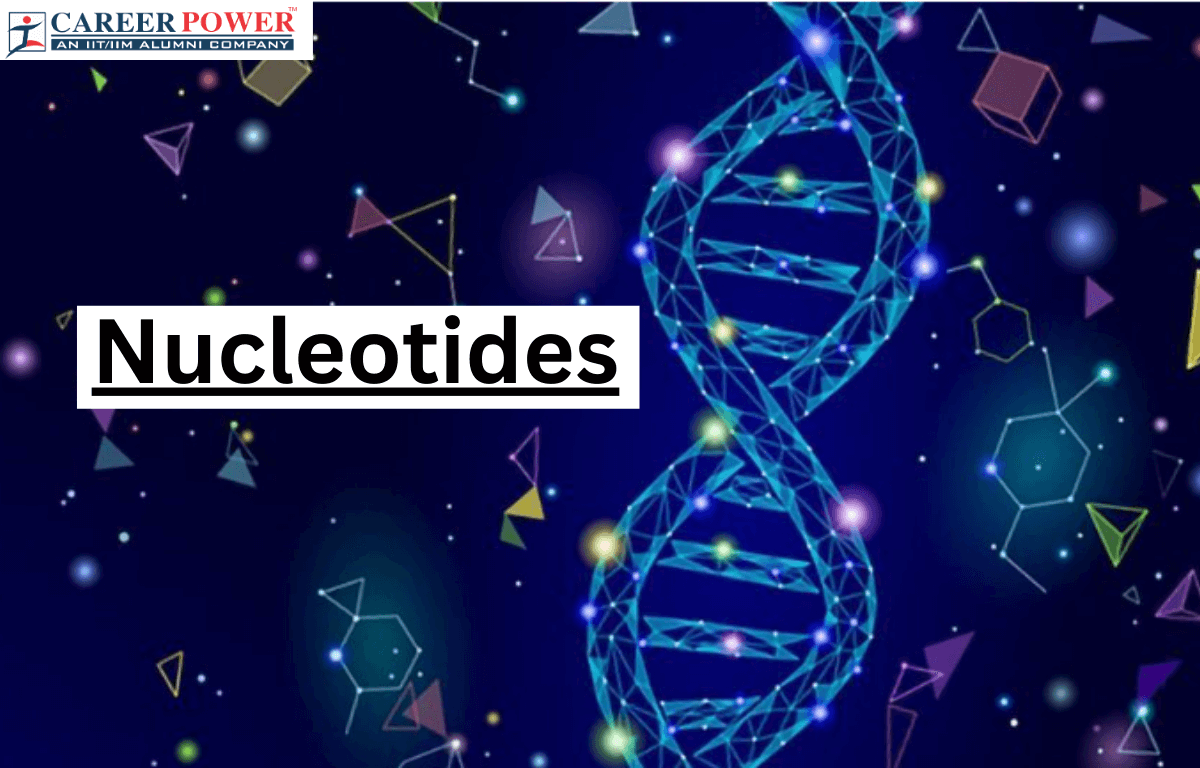

 50 Vegetables Name for Kids in English a...
50 Vegetables Name for Kids in English a...
 Food Chain: Definition, Types, Examples,...
Food Chain: Definition, Types, Examples,...
 Human Respiratory System: Definition, Di...
Human Respiratory System: Definition, Di...













